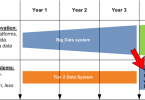IT has significantly evolved over the years. Implementation of new standards and best practices is constant as the introduction of new technologies and IT services continues. Services, owners or providers of services, and service level agreements (SLAs) are changing, finding better ways to track and provide assistance.
To that end, IT service catalogs were introduced as part of best practices for IT Service Management (ITSM). The catalogs and their purpose has transformed, depending on needs and new use cases. For the end user or customer, a service catalog demonstrates a level of professionalism that can set providers apart.
This professionalism gives the IT team a boost of confidence that they may not have previously had. Technology also gives a boost, because it now has quick ways of transferring knowledge between team members, departments, and vendors. More agile communication and knowledge transfer provide for faster resolution times.
Executives also benefit from the metrics produced by IT service catalogs. By being able to measure different aspects of the help desk, an executive is able to better understand the inner workings of his team.
Purpose of the Catalog
An IT services catalog serves multiple purposes for each group involved. The end user needs the catalog to help guide them through self-service resolution or directing their issue to the appropriate person. The IT professional needs the database to understand vendor SLAs, to know which member of the team should handle the case, and to have a knowledge base of solutions. The manager benefits from having a tool that refines the team by determining SLAs. Further, managers can use the metrics generated by the catalog use, determining staffing needs for different types of technology.
Customers
IT customers, whether inside or outside the business, can benefit from the service catalog, especially in today’s complex IT world. In the past, internal IT teams focused on making sure laptops and desktops were working correctly. You typically had generalists handling every aspect of your IT infrastructure.
Today we find a much different landscape for IT. We have moved beyond the standard desktop support into a world where every aspect of the business–from accounting software to document version control and to security–requires deep understanding and knowledge of how the technology works and interacts with the systems already in place.
With this in mind, we find ourselves in a situation where the fastest SLA times can be achieved only when customers initially provide as much information as possible, assisting IT professionals in troubleshooting any on-going problems. The IT service catalog, when properly implemented, provides a way for the end user to properly select the issues they are experiencing so that IT can quickly and correctly resolve the user’s issue.
Another key benefit of the service catalog is giving the end user the ability to resolve simple issues themselves. This saves time for your team in situations where someone accidentally turned off NUM Lock or another similar situation. By using your service catalog as a self-service portal for these less complex issues, you empower your end user, while keeping your IT team operating at peak performance. This can keep your team leaner while increasing overall productivity.
IT Team
You may ask, “How do service catalogs benefit the IT team?” As stated previously, IT has become a behemoth in the number of services, plug-ins, add-ons, and the like that are being used today. With so much technology out there, it’s truly impossible for one IT person to be the expert on every piece of technology in existence. This is how the services catalog can help your organization shine.
Even though you have an IT team, pieces of technology may be used within the business, supported by a third party, interacting with the IT team. Service catalogs make sure that the issues are resolved within the given SLA.
When issues are reported via the services catalog, your IT team can now review the request, confirm its accuracy, and forward it to the appropriate team member handling issues instead of being assigned to a generalized queue. In the instance that the IT ticket needs to go to an outside vendor, the service catalog can guide your IT team, making sure the right third party is engaged. Further, the service catalog can give your IT team an idea of that vendor’s expected SLA. This means that your IT team immediately because more efficient in managing the problems that inevitably occur.
Another benefit of the service catalog is that, over time, it becomes a knowledge base for your IT team. This makes it easy to resolve issues that occur infrequently, but, without a knowledge base, would take hours or days to resolve because the technician would, in essence, need to reinvent the wheel each time to find the problem. Now, with a service catalog, information can be stored for the technician to use efficiently.
Further, over time, service catalogs can assist you when hiring new employees to be part of the IT team. With a knowledge base, you can decrease onboarding time for new IT employees. On top of decreasing onboarding time, you can have more entry-level technicians come onboard, decreasing overhead costs.
Management
How do companies manage the complexity of IT today, making sure businesses are streamlining? How can you tell if companies need more systems administrators, network administrators, desktop support, or any number of related IT functions? The IT services catalog can help determine those outcomes by serving as an excellent tool for executives to know the needs of their business.
By creating a focused point of entry for the end user to quickly and clearly communicate an issue, you’re able to get accurate statistics on the type of issues that are being experienced. These metrics can allow you to determine the type of employee you need and keep you from hiring a network engineer when all you need is a network administrator.
As an executive, you can create and track internal SLAs effectively allowing you to find bottlenecks in production. Further, service catalogs are especially useful if your business is providing these IT services to outside customers, or you need to create internal SLAs for business-critical processes and hardware. The metrics gained by the proper implementation of the catalog increases an executive’s level of management sophistication within an organization.
Any IT team and organization as a whole would benefit from the use of an IT services catalog. The benefits of the catalog we’ve discussed for the end user, the IT team, and the manager leads to a more sophisticated IT strategy implementation. IT services catalogs are beneficial in today’s increasingly complex IT world, where skill sets are becoming more specialized each year and finding the right balance of team members is key to a successful implementation of IT strategy.







